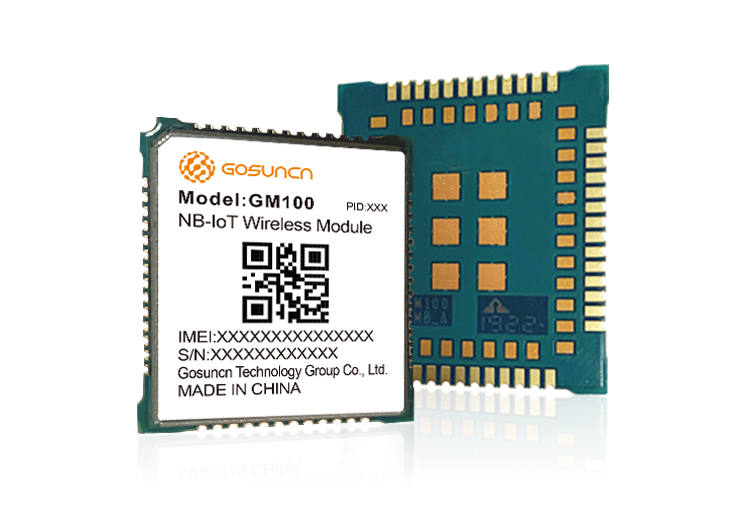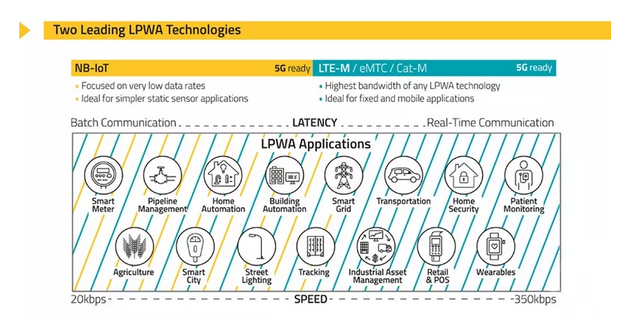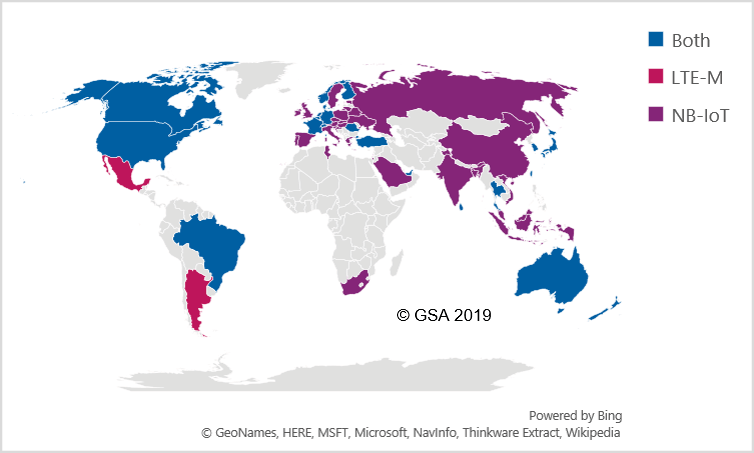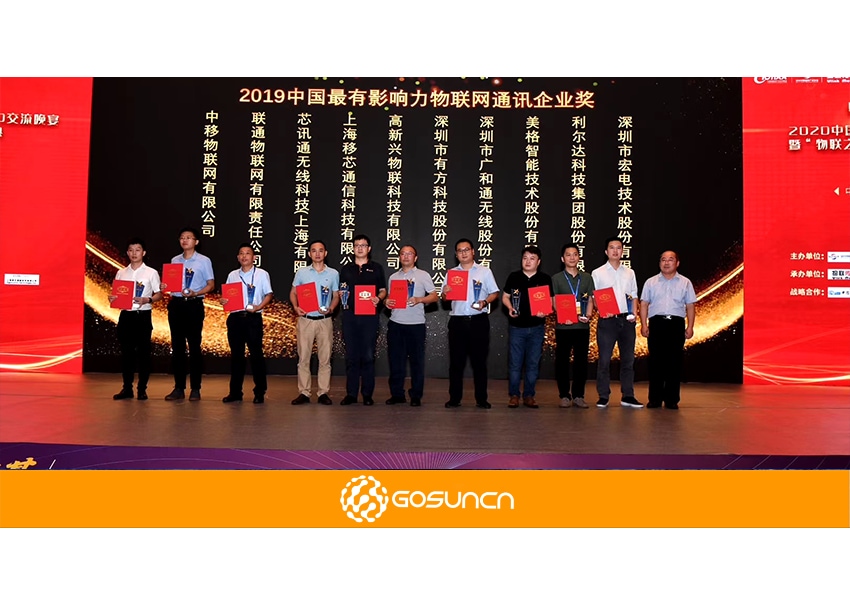
- New standard: Supports 3GPP Rel.14 LTE Cat M1 (eMTC) and LTE NB1/NB2 (NB-IoT), and can be fallback to 2G/E-GPRS. GM100 could meet the multiple network combination in different regions and countries;
- Global RF band: Supports a wide working for RF band, from 450MHz to 2100MHz. GM100 module integrates 18 CatM1/NB-IoT bands worldwide (B1, B2, B3, B4, B5, B8, B12, B13, B14 (Cat M1 only) , B18, B19, B20, B25, B26, B28, B66, B71 (NB1 only), B85), and GSM quad-band (B2, B3, B5, B8);
- Ultra-small package: GM100 adopts 20*24mm small package, which is conforming to CCSA standard, meeting the application needs of various industries;
- Low power consumption: Compared with the previous generation products(ME3612), the power consumption can be reduced by more than 70% in PSM mode;
- Higher integration: The chip size is reduced by 50%, and the integrated flash memory, RAM and RF front-end are more integrated and more cost-effective;
- Global positioning system embedded: Integrated GNSS positioning chipset, can support GPS / Beidou / Glonass / Galileo global positioning system;
- More secure: support multiple security mechanisms such as secure boot, secure storage and debugging, and hardware encryption;
- More powerful: Based on Cat M1 standard, it can support VoLTE voice service, mobility, and high reliability;
- Others: OpenCPU, eSIM, FOTA, multiple protocols and compatible with mainstream cloud platforms, including Alibaba Cloud Link One, China Mobile OneNET, DTSTON DTCloud, Ericsson IoT Accelerator, Gizwits, and Verizon ThingSpace, and it also allows developers to extend this integration further and develop support for other major IoT cloud providers.
In 2018, 3GPP standard organization promised that LPWAN will continue to evolve as part of the 5G specification process through LTE Cat M1 and NB-IoT, and they will not research other LPWAN solutions for 5G. As the mainstream technology for future 5G evolution, LTE Cat M1 and NB-IoT will be able to provide narrowband low-rate, high-capacity connectivity technologies for smart cities, smart homes, environmental monitoring, and other industries in the massive machine type communication (mMTC) scenario. NB-IoT and LTE-M will operate coexist in 5G, and most NB-IoT and LTE-M devices can be upgraded to support 5G. By LTE Cat M and NB-IoT technologies, GM100 will empower more and more industries to get connected anywhere. GosuncnWelink will release the 5G modules at the end of 2019.

NB-IoT and LTE-M/eMTC/Cat M will continuously evolve to 5G
"Based on Qualcomm 9205 LTE modem, Gosuncn GM100 module integrates 18 CatM1&NB-IoT bands, GSM Quad-band, and GNSS into one small package, bringing seamless cellular connection for multiple IoT devices in worldwide. Our customers are urgently waiting for these cutting-edge technologies to build their IoT applications. Gosuncn are proud of the long-standing cooperation with Qualcomm Technologies, we will continue to enable the internet of things." said Kegong Zhu, Vice president of GosuncnWelink.
LPWA networks are being deployed worldwide. By May 2019, there were 148 operators investing in NB IoT in 71 countries, up from 133 operators in 64 countries in January 2019. The number of deployed/launched NB-IoT networks reached 98 in 53 countries, and there are 62 operators investing in LTE-M networks in 36 countries.

Global Cellular LPWA Network Status(Data Resource: GSMA)
By global band supported, GM100 could be widely used in the global market, including China, North America, Japan, Europe, and Australia, etc. GM100 will also be certified by global regions and main operators, such as CCC, CE, GCF, FCC, PTCRB, RCM, etc.
GM100 samples are ready now, please contact GosuncnWelink’s sales staff or distributors to apply.
For more information, please visit www.gosuncnwelink.com/en
About GosuncnWelink
GosuncnWelink, a leading supplier of M2M wireless communication solutions GosuncnWelink Technology Co., LTD., referred to as GosuncnWelink, dedicated to the development, production, and marketing of cellular M2M Modules, connected car solutions, and IoT solutions.
GosuncnWelink's products and solutions have been widely used in connected car, smart metering, smart city, remote controllers, tracking, wireless POS machines, security and surveillance, and telemedicine, etc. By its cutting-edge technology, quick customization, and development ability, GosuncnWelink will provide you with excellent products and services in the future and look forward to working with you together to move towards a new era of the Internet of Things.

